Table of Contents
Introduction
The Dance of Shiva can be used to represent anything that you want to learn. It is a complex system of positions and movements that can be broken down into simple elements. You learn the system by learning the elements.
The process of learning involves assembling the elements so that you have a working model of the dance of shiva inside of yourself. The more complete the model is the more of the dance of shiva you can do without having to think about how to do it. Because you don’t have to think about how you do the movements you can focus your awareness on the quality of the movements themselves. You can make the movements smoother, more precise.
The elements of the dance of shiva are clearly defined making it easily learnable. They also fit together cleanly the way the parts of a plastic model kit fit together. That makes it easy to assemble a model of the dance of shiva inside of yourself.
Models
Models are representations. As part of ourselves they can be used as references. They can also be used for movements and postures. They also have “processing power.” They can in part do some thinking for us in zero time.
The better the model the more problems and situations it can handle.
Basic Positions
The first part of the Dance of Shiva is learning the positions. These are derived from two basic movements. The first is a continuous horizontal spiral where the hands are kept constantly upright. The second is a vertical spiral where the hands are kept facing outwards. The positions are simply four clearly defined points on each of these spiral paths. They are shown below, with the four horizontal positions labelled with numbers and the four vertical ones labelled with letters.
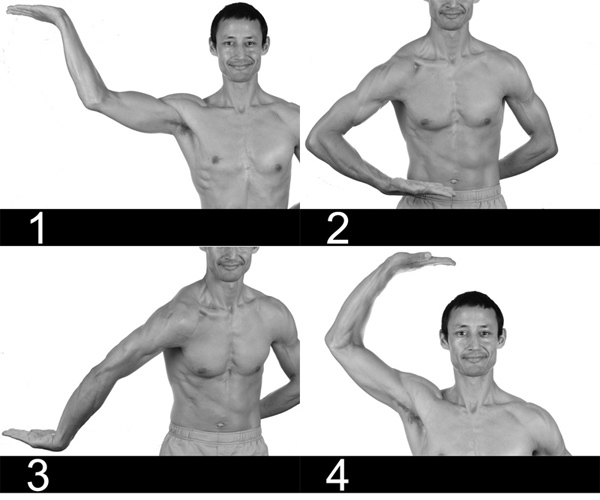
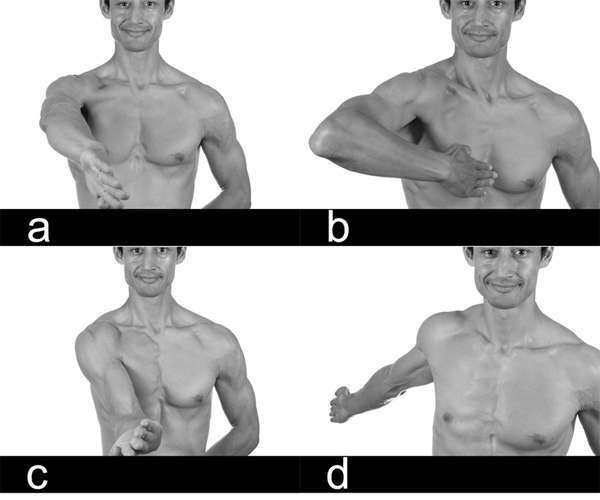
Notice the position of the palms, upright or outright. Also notice the height of the hands relative to the top of the head or the belly, (use the belly button as a reference). Also notice the direction the fingers point, outwards or inwards, forwards or backwards. Further, particularly for the vertical positions, notice the direction the elbow points in.
The positions can be difficult. Focus in turn on palms and fingers, forearms, and shoulders. You may also find it helpful to focus on your spine and ribcage, bending both to facilitate the hand positions.
After practicing one hand at a time, you can practice doing the same positions with both hands at the same time.
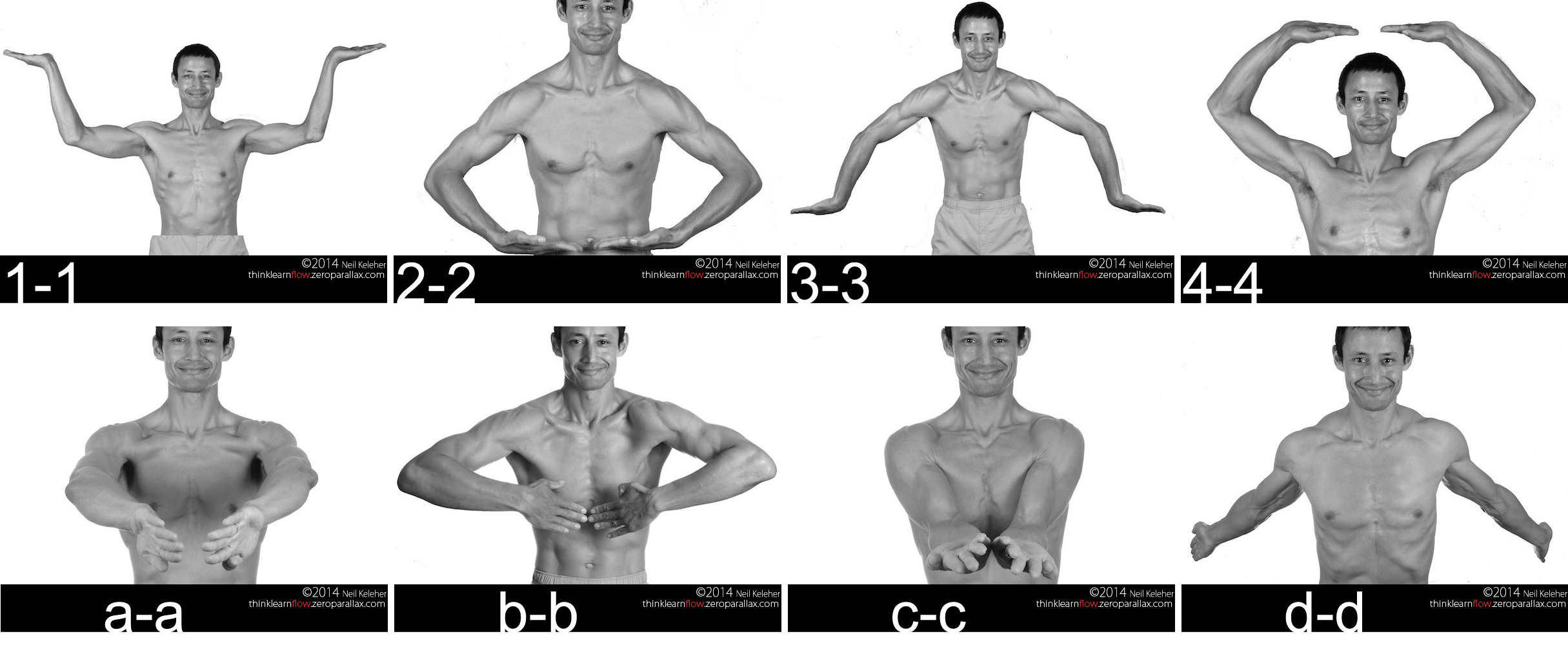
It can be helpful to do these in front of a mirror. See if you can make both sides symmetrical.
Take the time to learn the names of the positions. Know without thinking which position is represented by the letter C. Know without thinking the position represented by the number 4.
Use the video as a guide to practicing the arm positions.
Double Arm Positions
When using both arms at the same time, arm positions are represented with a two digit alpha-numeric code. Unless specified otherwise, the digit on the left represents the position of the left arm, that on the right the position of the right arm.
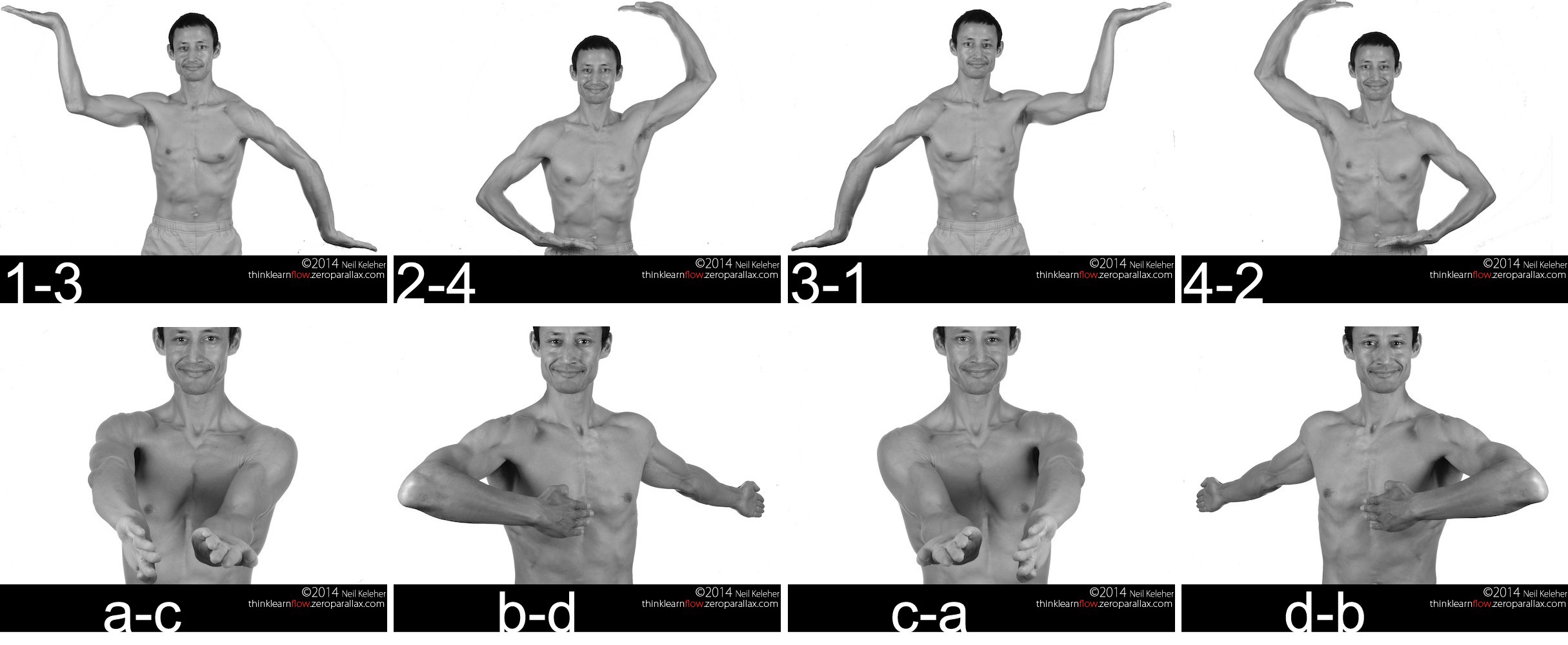
All images are mirrored so that the position of my right arm shows the desired position of your left arm.
Basic Movements
The dance of shiva is actually made up of a series of movements. The movements enable you to connect each position to every other position. This is what gives the dance of shiva it’s complexity. But at the heart of this complexity is simplicity since each movement connects only two positions to each other.


The positions hold the movements together, making them easily “joinable” or “connectable”.
There are 8 basic movements for each arm and the names of the movements relate in part to the names of the positions themselves. Forward and Changeforward movements join the positions in order while Backward and Changebackward movements join the positions in reverse order. Transquarters are movements that jump across positions to connect non-adjacent positions in the same plane. Change movements connect equivalent positions positions in different planes.
The eight movements are Zero, Forward, Backward, Transquarter, Change, ChangeTransquarter, ChangeForward and ChangeBackward. A zero movement connects a position to itself.
Movement Categories
Same plane movements stay in the same plane from position to position. Change plane movements change plane from position to position.
Non-Cyclic or Acyclic movements repeat twice before returning to the start position.
Cyclic movements can be repeated four times before returning to the start position.
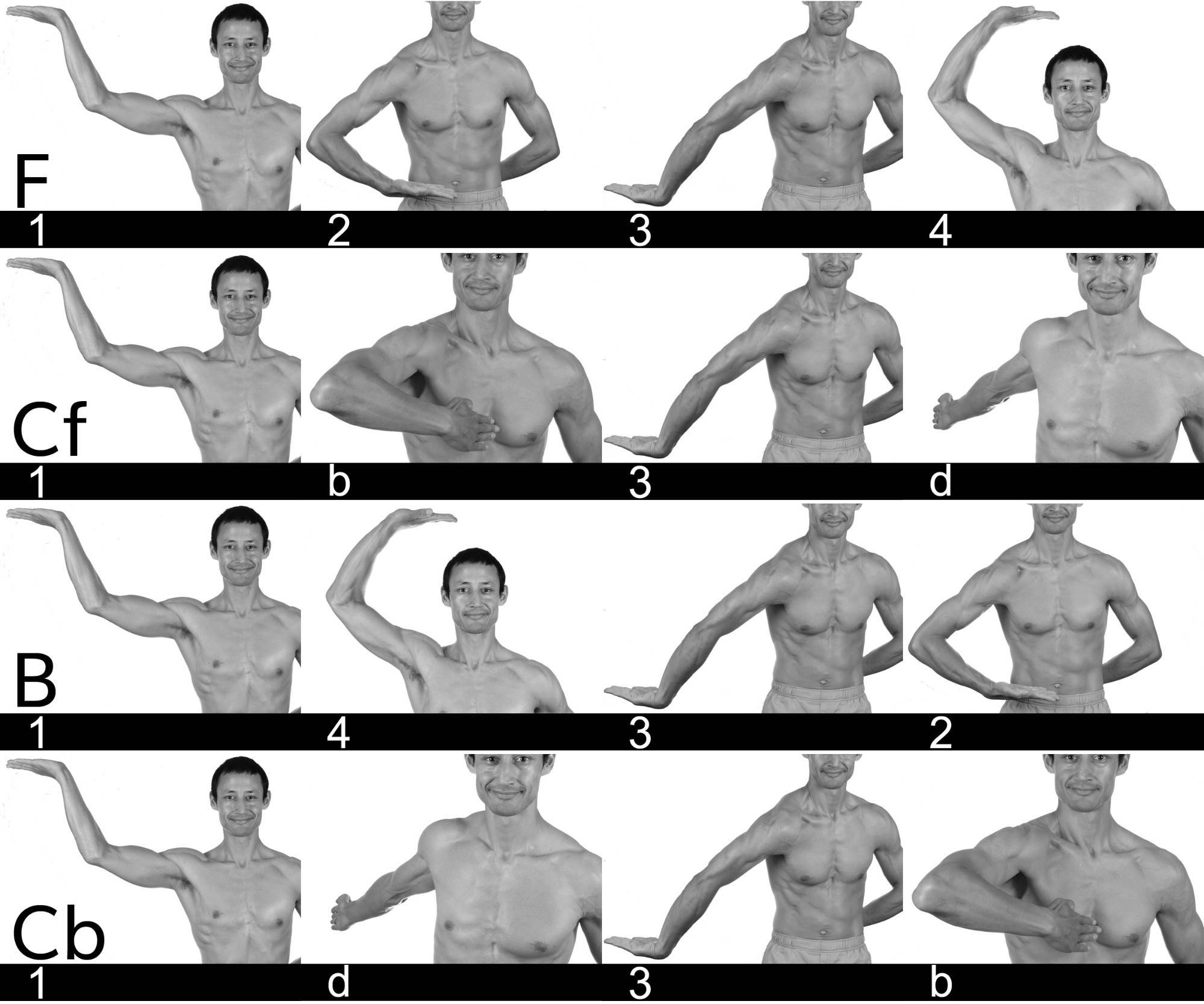
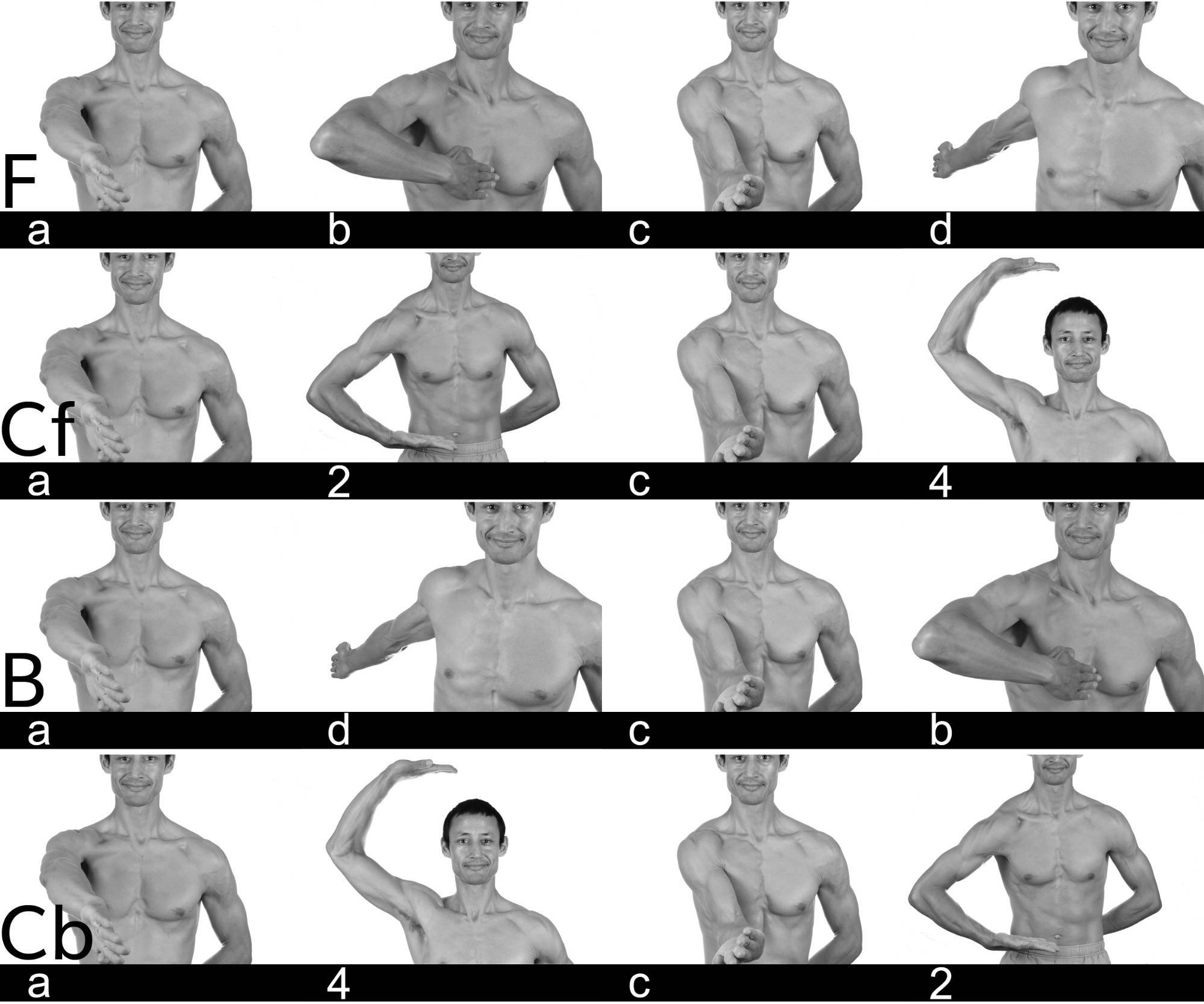
When learning movement combinations the categories are important in that they give a way of dividing the movements into groups so that the groups themselves become learning objectives.
The groups learned in part 1 (this book and accompanying videos) are: Cyclics (1a: both arms same-plane and both arms change-plane, then 1b: one arm same-plane the other change-plane) and Acyclics (with the same breakdown.)
Notice the patterns (and changes in patterns) in the following groupings.
Cyclics 1a:
- F-F, B-B, F-B, B-F
- Cf-Cf, Cb-Cb, Cf-Cb, Cb-Cf
Cyclics 1b:
- F-Cf, Cf-F, F-Cb, Cb-F
- B-Cf, Cf-B, B-Cb, Cb-B
Acyclics 2a:
- T-T, C-C, Ct-Ct
- C-Ct, Ct-C
Acyclics 2b:
- T-C, C-T
- T-Ct, Ct-T
